
Ten years ago, the idea of traveling on a bus for hours seemed inconceivable to me. This changed as soon as I moved to Nepal. I was broke, without a driving license, relying on the same mode of travel as the average Nepali. South Asian buses are refurbished, imported antiques, blasting their air horns ablaze with colored paintings by artists obsessed with Bollywood movies. They are known to have taken more than a few souls and have the ill repute of being unsafe. However, in the US, thousands of people travel between cities and states daily by Greyhound bus.

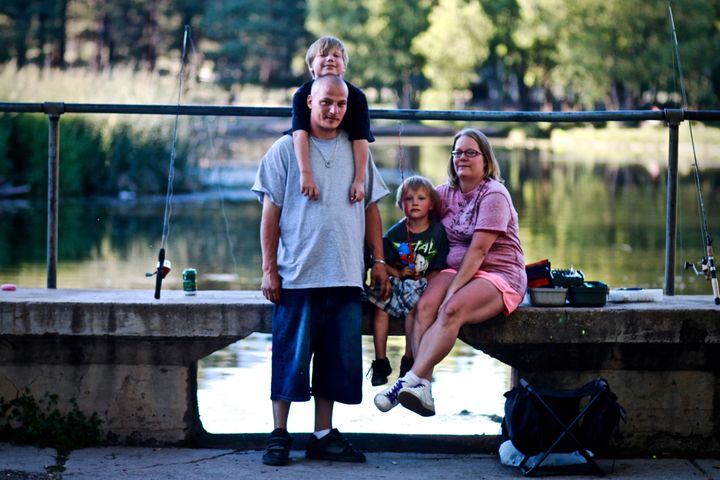
The Greyhound taught me that mobility is not just a means to an end. Rather, the travel experience itself produces meaningful interactions and cultural environments. The social, economic and ecological scope of Greyhound buses is equally appealing: it is all about bringing back mobility to those who have less and less of it in the American car-centric society.
Before owning a private vehicle became a status symbol, intercity travel on a Greyhound bus was an obvious choice. Today’s love affair with cars contributes to the depiction of the "Big G." as smelly, cramped and unreliable. Be aware, buses are malign, commonly seen as second-rate, and therefore tacitly intended for penniless students or low-income families.The stigma is real.
The Kerouacian romance of being ‘on the road’ convinced me to immerse myself in the realities of bus travel. By day, by night, in stations and highway-side rest areas, I spent the last four months crisscrossing Arizona by Greyhound bus to paint a picture of people, places, travel, and the transactions that take place between them.
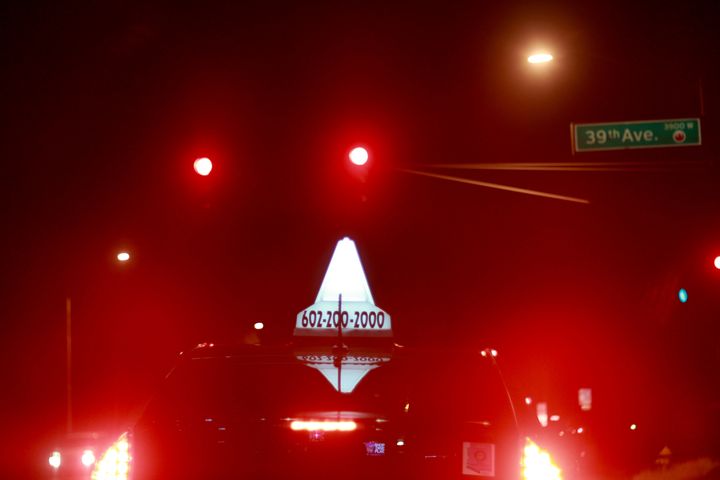
Greyhound Fear and Romance
The Greyhound journey begins and ends at the station. Passengers are getting psychologically and physically ready for the departure or the arrival and rarely engage in conversations with strangers. The Greyhound station is not an ideal scenario for greetings and farewells but it still carries some of the romance of train stations. The last moments of waiting begin. Eyes focus on the blue and grey bus, keen to possess their loved ones. In the bus corridor, meanwhile, the long-awaited beloved is tired yet excited. The bus slows down, making passengers savor the conflict between absence and presence. Phone calls are flying back and forth: “I am here, I can’t see you, where are you?”. Parents greet their children, boyfriends kiss their girlfriends while the lonely traveler slowly exits the station.
Despite their charm, Greyhound bus terminals have a ‘bad rep’. “If you go online and look up reviews for Greyhound stations, most of the time they are super-negative,” Tarek Elmani, a fellow passenger, tells me as I explore the question of how journeys shape the broader society within which people live. Tarek believes that the negative labels attached to the Greyhound are produced by our culture obsessed with the idea of perfection. “We have this desire of having everything so perfect. We have this overwhelming sense of urgency and judgement when it comes to services”.
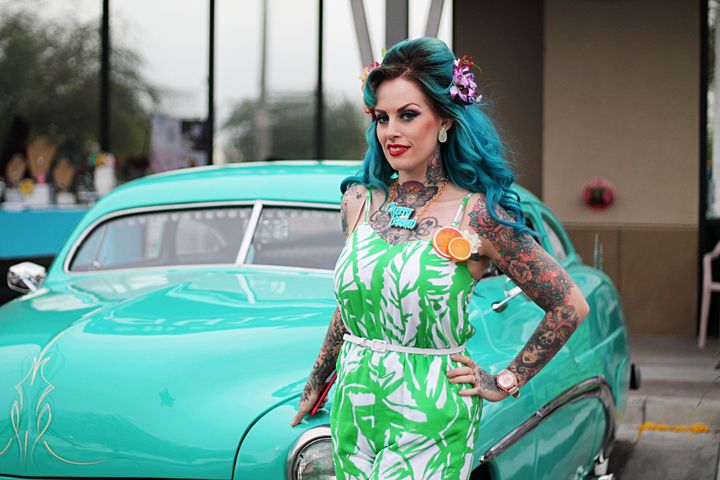
Walking through most American cities can be a desolating experience for people like me, the pedestrian, the public transport addict, who chooses rambling across cities over cruising fast through concrete landscapes. Driving a country made for cars means that the Greyhound is at the center of the vehicular warfare. A cruel irony, the itinerary from Flagstaff to Glendale includes a distant view of Arcosanti, a so-called futuristic city situated deep in the Arizona desert which was built with the idea that urban spaces should reflect both human aspirations and the needs of the environment.
I look out of the Greyhound window, see Arcosanti in the distance, and think of Enrique Peñalosa, former mayor of Bogotá, and his famous quote:
“An advanced city is not a place where the poor move about in cars, rather it’s where even the rich use public transportation.”
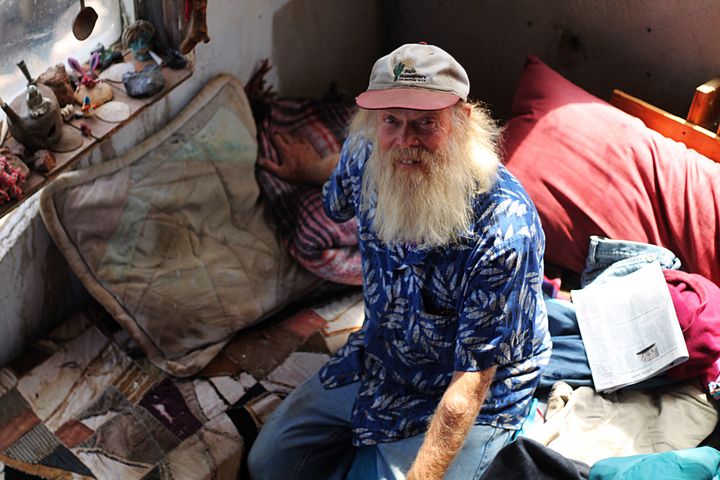
Isolation vs. Participation
Most of the people I interviewed on the Greyhound admitted that for the most part they stay pretty much to theirselves. Passengers tend to stall in their own world and disappear. Alonzo Gilbert, a retired veteran who lives in Las Vegas for the “booze and the boobs”, confesses that he usually tells people to “keep on walking” if they humbly ask to sit next to him. Gilbert is a cancer survivor and has lived life as an “educated black man in racial America”. A proud Casanova, Gilbert was married twice: once for love and the second time for money. “Life is too short to work on marriage number three,” he says.
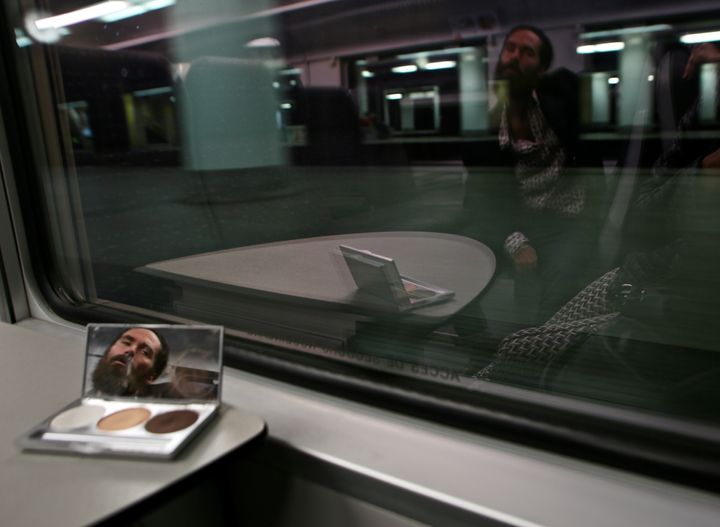
On the Greyhound just a minority of brave individuals refuse to be anonymous and engage in conversations with fellow passengers. Proximity generates discomfort and most passengers prefer to sit alone as if trying to escape the bubonic plague. It's as if the “other”, the person sitting next to you, is a threat encroaching upon your personal space. In lieu of physical escape, defensive adaptations such as avoiding eye contact and using personal belongings to mark their territory are used by passengers to diffuse the interpersonal discomfort. Few see the proximity with fellow human beings as an opportunity for a fortunate encounter and endless discussions. Napping, even fake napping, occurs at a high rate. It is when the sun fades that passengers unapologetically take off their shoes.
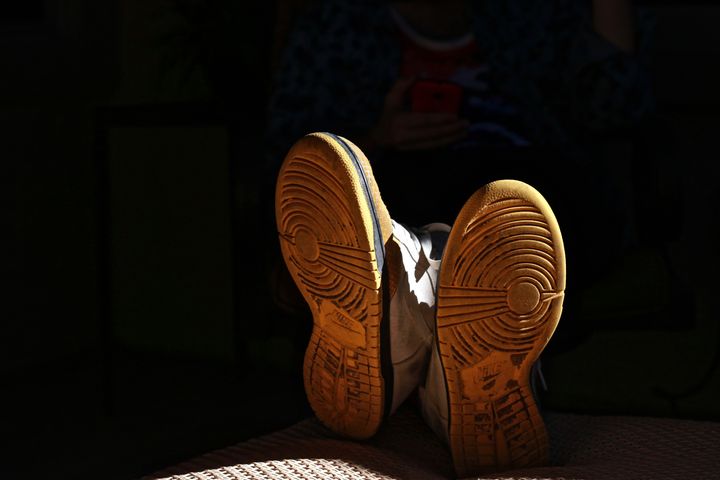
Real Gypsies and the “American Gypsy”
In 2014 the news broke that scores of undocumented immigrants were being flown to Arizona and dumped at Greyhound bus stations in Phoenix and Tucson. The relationship between Greyhound buses and migrants goes back to the 1970s.
"In 1972, Greyhound built up a "war chest fund" for Spanish speaking people-making an exception to company policy of concentrating on major markets - to advertise in towns and cities along the international line,” according to professor Carlton Jackson. By 1975, Greyhound was advertised on 23 Spanish broadcast TV and radio stations, placing particular emphasis on "eliminating the fear of the unknown".
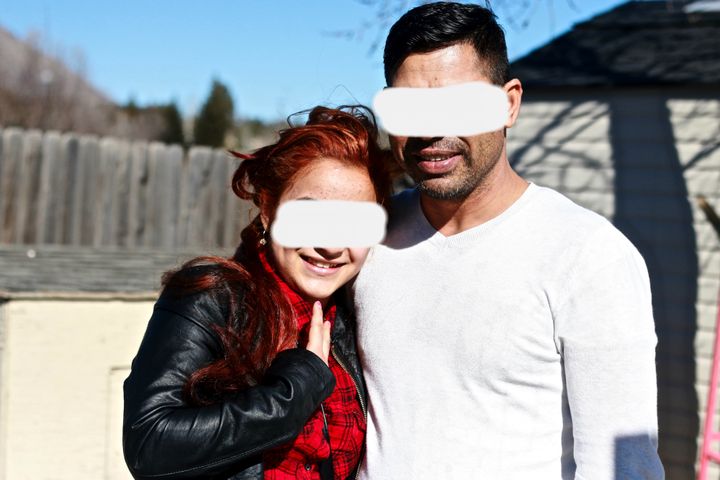
Migrants continue to navigate the Greyhound’s complex bus system. On my way to Phoenix I met Stefan from Romania, traveling with his daughter from Mexico to Texas. No papers. Stefan lived with his family in Italy for over 10 years, not able to speak a word of English, he hopes to find greener pastures in the US. His oldest daughter is married to an American citizen thus increasing his chances of relocating in the ‘land of opportunities’, but Stefan is no stranger to discrimination.
From the time Roma's entered Europe from India a thousand years ago, the Roma were targets of discrimination. Today, one in three Roma in Europe are unemployed and 90% live below the poverty line, according to the European Union Agency for Fundamental Human Rights. On a subsequent Greyhound trip from Flagstaff to Glendale I met another gypsy, but this time American.
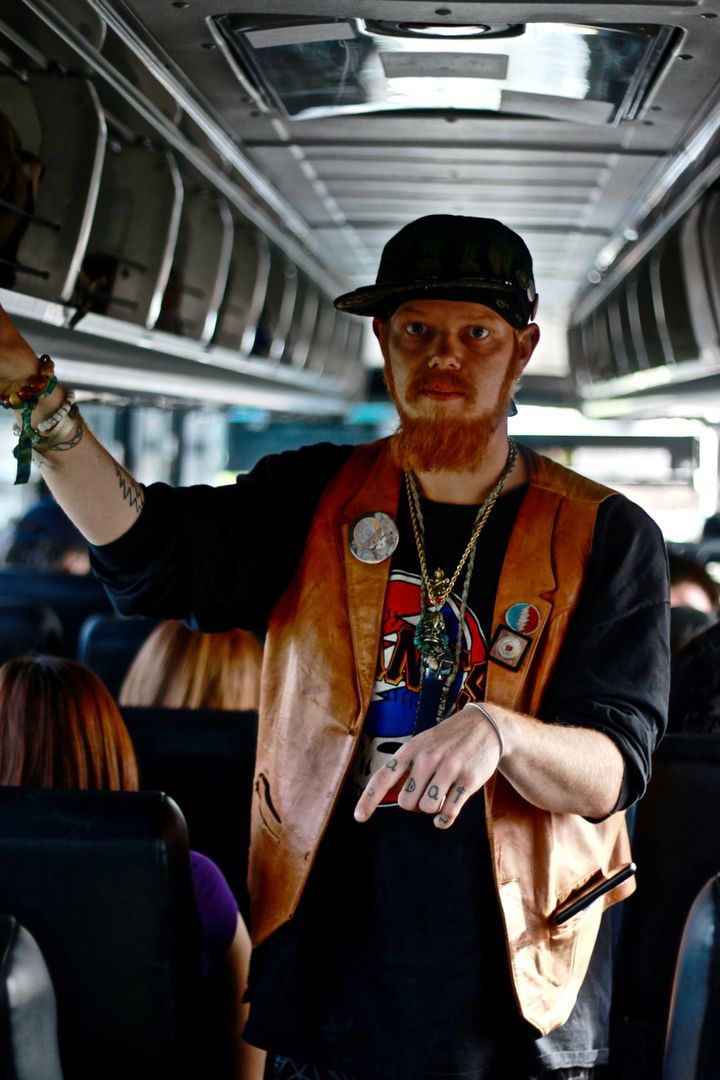
Billy the American Gypsy
Fledging hobo Billy hopped his first freight train ten years ago in California. It was the beginning of a lifelong love affair with a nomadic life on the rails and roads of America. I saw Billy as soon as I stepped into the Flagstaff Greyhound Station. He was hard to miss as he looked like a hybrid between a cyber punk and a pirate. A leather gilet covered in pins, dark baggy pants full of zippers and a ginger beard.
Today, the word “hobo” tends to evoke the caricature of a raggedy traveler. Another interpretation appeals to our values of no-strings attached living: the fantasy of finding freedom, sleeping under the stars and being part of a large community of wild and creative souls.

“My friends and I, we spend 99 percent of our time traveling across the country. We are like American nomads. American gypsies. We just travel around, hitchhike, hop on trains…There is thousands of us, thousands,” Billy says while lighting up a cigarette.
He jumped his first freight wagon when he was homeless aged 17 after his drug addiction got so bad that his parents kicked him out of the house. Looking at his watch he tells me that he’s been sober for 3 years, 3 months and 5 days. Too many friends died for “dumb stuff on the streets", convincing him to give up drugs. “I had 14 friends dying in the past 2 years. I am only 27, I shouldn’t use my fingers and toes to count my dead friends.”
Wearing a grubby T-shirt, patched jeans, baseball cap, and a bunch of Hindu bracelets Billy pets his service dog Calypso as he explains why he opted for a life surviving on casual tattoo work. “Freedom, I don’t have to answer to anyone. Most of the time, unless I get pulled over by the cops, I get to do whatever I want.”
Students’ love affair with the Greyhound
Over the years, Greyhound sales campaign concentrated not only on migrants, elders and lower-income families, but also on students. Among students traveling alone on the Greyhound, the most common site is of individuals sitting alone handling something digital like a cellphone, or an iPod, indicating the riders’ effort to isolate themselves, possibly to avoid the feelings of social awkwardness.
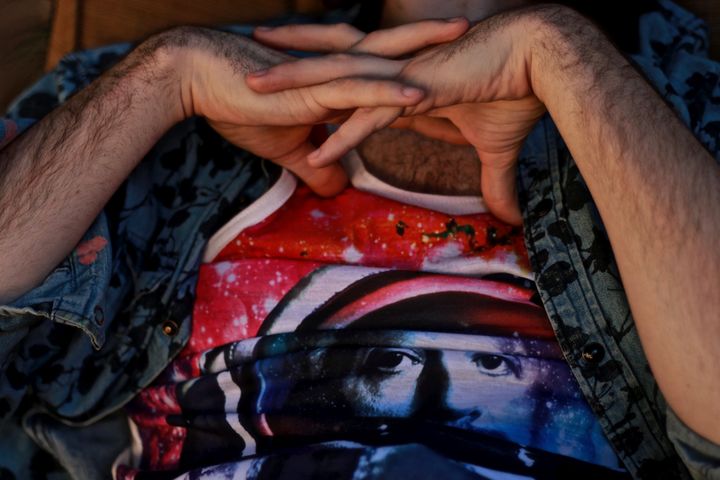
When I met Marleen Ponce, a 19-year-old Mexican-American student at Northern Arizona University (NAU), she was engulfed in technology, frenetically sending messages and checking her Facebook news feed. I later discovered that Marleen’s dream is to bridge the “medical gap” between Spanish-speaking patients and doctors in the US. “I come from a low-income family so they are doing their best to help me out. Neither of my parents went to college, they both did their high school in Mexico,” she explained. “My grandma has diabetes so she always has medical appointments. She really struggles to communicate with doctors and nurses as most of the time they don’t speak Spanish. As I am bilingual, I feel like I could help the community in this way,” Marleen added. She will be about 35 thousands in debt after she graduates.
According to a new dataset compiled by the University of Michigan Transportation Center, only 5 percent of Americans report using public transportation "every day or most days," and a whopping 61 percent report "never" using it.
Living in a large state such as Arizona without a driving license means that the Greyhound represents for me much more than a bus. It's my way out of the desert. The sad part is that public transportation in the US is reduced to a feeble network of buses. The disinvestment in this sector and the widening gap between who can afford mobility and who can’t, prevent the US from functioning on a very basic level. If there is something the Greyhound can teach is that it is possible to be united in diversity and human experience, if anything, on a bus.
